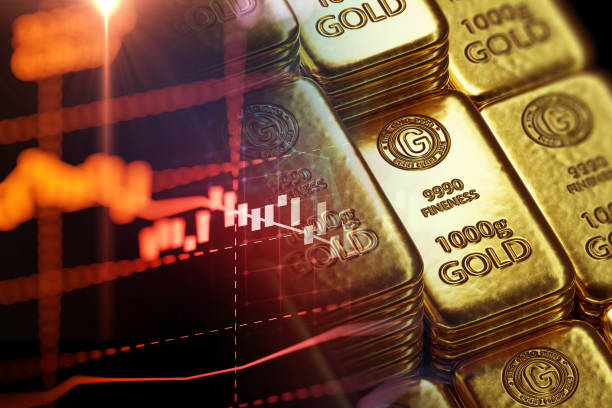2 Gold ETFs You Can Buy and Hold Forever


TradingKey - In the world of investing, we normally focus on stock markets and the excitement surrounding the asset class that is commonly referred to as “equities”.
With exciting companies, share price action and potential for growth, it’s understandable. Stocks are also the best long-term asset to own. However, within investors’ portfolios, there should be some level of asset diversification.
While bonds (or fixed income) typically provides this balance, increasingly many investors are looking towards gold as an asset that can provide a defensive element to portfolios. That’s down to a few reasons. Firstly, gold has a low correlation to global stock markets (i.e. it normally rises when stocks fall) and, secondly, it has been a store of value for centuries.
Indeed, many of the same arguments about holding Bitcoin can be made for gold; it’s finite, it’s not owned by any one nation (decentralised), and it doesn’t produce any cash flows. As a result, just because you hold Bitcoin (or crypto), it doesn’t mean you can’t hold gold too. In 2024, the price of gold rose over 27%, outperforming the S&P 500 Index.
Many traditional asset allocation models suggest that an ideal percentage range for gold should be anywhere from 5% to 15% of an overall investment portfolio. The best way to get exposure to gold nowadays is to buy it via a physically-backed ETF.
So, with that, here are two gold ETFs that investors can consider buying and holding forever.
- SPDR Gold Shares ETF
This is the “OG” of gold ETFs. The biggest gold ETF in the world, the SPDR Gold Shares ETF (NYSE: GLD) has assets under management (AUM) of US$91 billion.
It was one of the first gold ETFs to launch, back in 2004, and transformed the way investors access the yellow metal. Unsurprisingly, as many commodities are traded in US Dollars, this ETF is also traded in US Dollars.
Listed on the New York ARCA Exchange, the ETF has an annual expense ratio of 0.40% per annum (p.a.) and also has secondary listings in the Singapore, Japan, Hong Kong, and Mexico stock markets with local currency share classes. That highlights the global appeal of both gold and this ETF.
Being physically-backed means that when investors buy shares of this ETF, the ETF provider (State Street) also has to physically buy the gold. As of 27 March, the SPDR Gold Shares ETF held nearly 930 tonnes of gold in trust.
So far this year, the SPDR Gold Shares ETF has gained 16.5% and easily outpaced the 3% decline of the S&P 500 Index.
- iShares Physical Gold ETC
Next up is the iShares Physical Gold ETC (LSE: SGLN) (LSE: IGLN). Similar to the SPDR Gold Shares ETF, this ETF from iShares is a physically-backed gold ETF.
The key difference here, though, is that this ETF is listed on the London Stock Exchange and is domiciled in Ireland. As a result, it’s classed as an “UCITS ETF” and is more appropriate for those not from the US or living in the US.
Why? It’s mainly to do with tax reasons, which make UCITS ETFs more appropriate for non-US investors. In terms of the actual iShares Physical Gold ETC, it also has a lower expense ratio than its SPDR equivalent.
The annual expense ratio is just 0.12% p.a. but its AUM – at US$20 billion – is much smaller than the SPDR Gold Shares ETF listed in New York. However, for long-term investors who aren’t trading gold on a weekly/monthly basis, this should be an issue.
While the primary share class of this ETF is traded in British Pounds (GBP), there is a US Dollar share class that is also available under the ticker “IGLN”. So far this year, the IGLN share class of the ETF has risen by 17.5%.
Growth and recession fears on the agenda
Overall, gold will continue to be an asset that many investors will want to hold in their portfolios as a defensive hedge against the chaos that’s ongoing in the world.
With more uncertainty, from trade policies to geopolitical tensions and even war, gold has proved to be a reliable asset to own in highly uncertain periods. Buying it via an ETF is one of the easiest and cheapest ways to own gold.
Of course, investors should be sensible with the percentage amount of gold they allocate in their portfolios but many experts believe that – even with gold’s strong performance in recent years – many investors remain under-allocated to the yellow metal.





